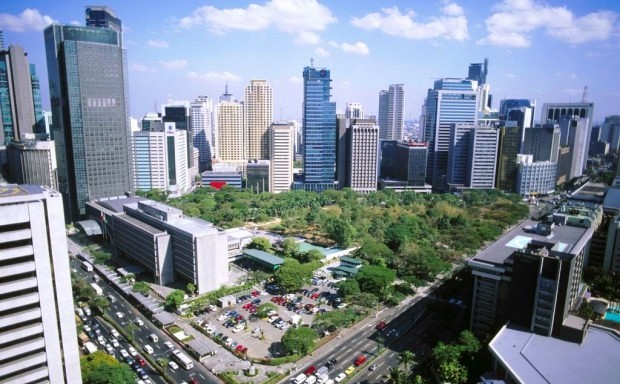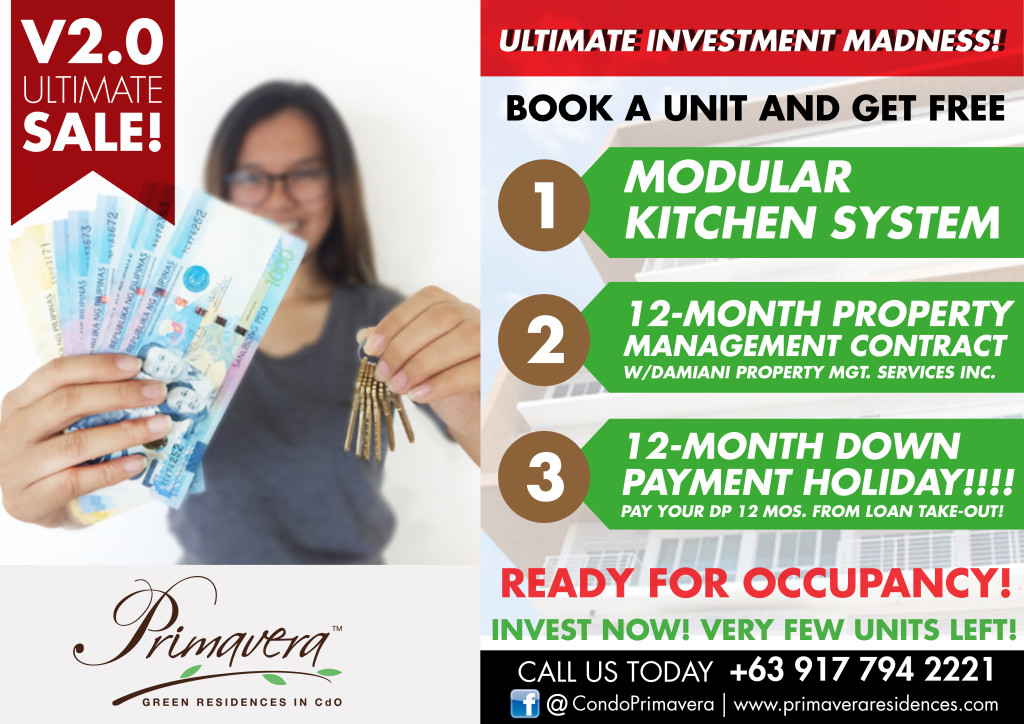I recently attended the Business and Investment Opportunity Forum conducted by Primavera Residences together with its partner bank BPI Family Savings Bank
It proved to be a very productive and enlightening few hours for me
The forum which is the first of a series, is aptly titled SOAR or Sustainable Opportunities and Advocacies in the Regions
One of the topics discussed during the forum is something each and everyone of us should be concerning ourselves — INVESTMENT
The inspiring talk conducted by Louis Sidney “Mark” T
Capanzana the Investment Counselor/ Trust Officer of BPI-Cagayan de Oro, was full of eye-opening ideas that made me alternately scratch my chin in deep thought and examine my investments and finances right then and there
Here, I’ll be sharing with you 7 key points that Mark discussed
Hopefully this will hit a chord inside you and propel you to take some actions too
Concept No
1: KNOW WHAT YOU HAVE
You can’t really grow something that you haven’t really identified yet, right? Or as the speaker puts it, “you can only grow the things that you measure
” That being said, the first thing you need to do if you want to grow your money is to examine your current financial situation
As a tidbit of information, did you know that the average Filipino only has P6,785 worth of savings? And the sad part is, only 2 out of 10 Filipinos actually have money in the bank
To remedy this situation, we should take to heart this formula:
Income – savings = expenses
Remember to pay yourself first before you pay the bills
Concept No
2: SAVING IS NOT INVESTING
Most people don’t really give a lot of thought about investing, and saving is often mistaken as a form of investing
Well, it’s not
Saving is just like putting your money inside a piggy bank and leaving it there for a period of time
Investing is a totally different story altogether
It is making your money work even harder, and letting it grow bigger and bigger in the process
Take for example putting your money in time deposit versus in a bond fund
The interest for time deposit would be at 0
75%, while for bond fund, it’s at 4
5%
See the big difference?
Concept No
3: BEAT INFLATION
As Mark describes it, inflation is like running on a conveyor belt
The prices of commodities increase so you have to make more money
Your money should be growing faster than the prices can increase, It should be outrunning inflation and kicking it in the gut
Concept No
4: INVESTING IS UNIQUE AND PERSONAL
Just as each person has a unique personality, so does our own individual investment personalities differ
Based on a little quiz Mark gave to the attendees, it turns out that I have a moderately aggressive investment personality
And I have to agree on that
Whatever your investment personality is, there is a set of investments suited for you
Find one that suits you best
There is no one-size-fits-all for investments
If you know the kind of risks that are suited to you, then you will be able to sleep easier at night and feel better with your choices
After all, our peace of mind is something we should always factor in on our decisions
Concept No
5: THERE ARE DIFFERENT KINDS OF INVESTMENTS
The higher the risks, the higher the return
Which one should you go after? Remember, the high-risk investments aren’t for the faint of heart
Based on your personality, you could focus on the types of investments that are better suited for you
Take time to read up and research
Better yet, talk to an investment counselor like Mark
It is also advisable that you mix up your investment options a little
Like the cliché goes, never put all your eggs in a single basket
Concept No
6: TIMING DOES NOT WORK
While some people insist that investment is all about timing, our speaker begs to disagree
We shouldn’t just rely on timing
The important thing is to start early and to do it consistently
As an example, your 100 pesos each month could become 1 million in 40 years, when invested properly
Place it in the same investment for 30 years and you’ll get only 300,000
Bottomline is, it’s not timing that is important, but rather, it is the length of time
So if you’re asking when is the best time to invest, the answer is: YESTERDAY
And finally, the last concept
Concept No
7: INVESTMENT IS FOR LIFE
Investment isn’t just a one-time thing
It’s something that should be part of our lives
Investment is something that a lot of young people sweep to the backs of their minds and label as “FOR LATER”
But the earlier we jump into this bandwagon, the better
Financial Management seminars can be quite costly, but Primavera and BPI Family Savings Bank were generous enough to impart these knowledge to us for free
You should grab this chance too and let it help you carve better plans for the future
Find out more about the upcoming investment and business opportunity programs of Primavera Residences
Click
Filipino resiliency drives the Philippines’ growth. There is a positive piece in all this Philippine political drama after all. Of all the Southeast Asian countries, Philippines is rated by US companies as the country having the most improved business climate. According to a survey conducted by the US Chamber of Commerce and the American Chambers of Commerce in the ASEAN, the Philippines has the thumbs-up of the companies because of a more stable government and a political system, in general. Who would have thought that the spectacle of the government’s fight against corruption – with all its fuss comparable to afternoon telenovelas – is actually benefiting wonders to the economy. Other reasons cited included cheap labor, cheap housing costs, and the slowly but still improving infrastructural developments. The current business climate is indeed a good set-up for investing in the Philippines. Although not stressed by the survey, I believe what is more noteworthy of the country is the Filipinos’ resiliency. This can be seen in Northern Mindanao for example, particularly in Cagayan de Oro. The city was badly battered when it was caught unaware by the first typhoon it experienced for more than five decades. Indeed, nothing can replace the lives that had been lost in the tragedy. But the city learned from it. When Pablo came, the residential areas that had been affected by Pablo were evacuated, each family already expecting the deluge. Businesses and institutions have identified better and safer locations in the city, and operations are adjusted to easily flex in times of severe weather disturbances. Unemployed individuals were trained to have ready manpower in case of need. Even the power shortage of the previous years was studied. Bulk operations were moved to schedules with lesser power load needs. Localized sources for power were identified and developed. This valuable characteristic of flexibility, coupled with an improved business climate in the country in general, should be the key of Kagay-anons – and the rest of the Philippines, at that – in grabbing the current opportunities to invite investments. Cagayan de Oro, although already a busy city and one of the major economic hubs in the Mindanao region, has still so much potential to still be more. Interested to invest in the Philippines? Click here for a great investment opportunity in the Philippines!Why invest in the Philippines?


